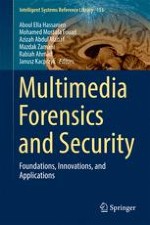This book presents recent applications and approaches as well as challenges in digital forensic science. One of the evolving challenges that is covered in the book is the cloud forensic analysis which applies the digital forensic science over the cloud computing paradigm for conducting either live or static investigations within the cloud environment. The book also covers the theme of multimedia forensics and watermarking in the area of information security. That includes highlights on intelligence techniques designed for detecting significant changes in image and video sequences. Moreover, the theme proposes recent robust and computationally efficient digital watermarking techniques. The last part of the book provides several digital forensics related applications, including areas such as evidence acquisition enhancement, evidence evaluation, cryptography, and finally, live investigation through the importance of reconstructing the botnet attack scenario to show the malicious activities and files as evidences to be presented in a court.
